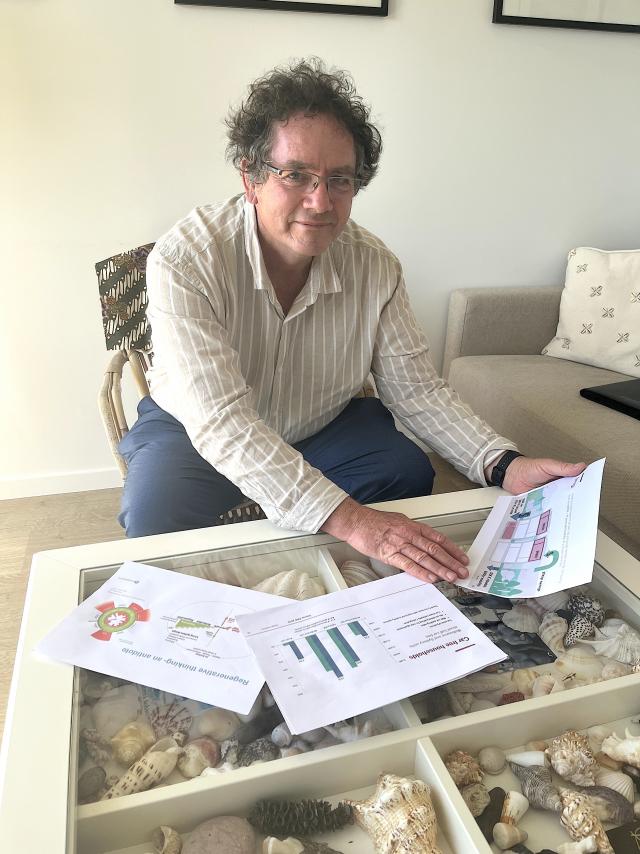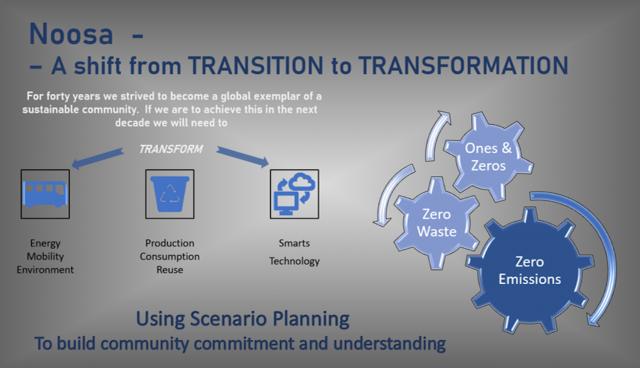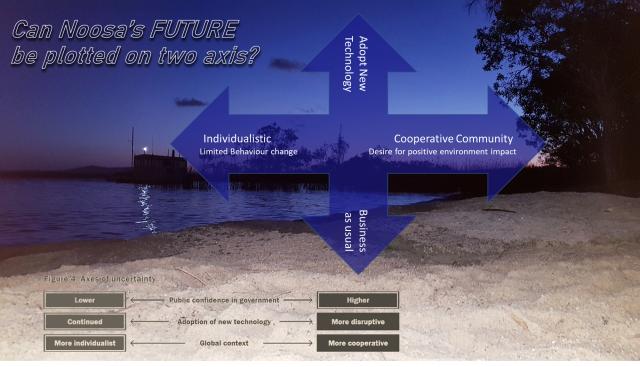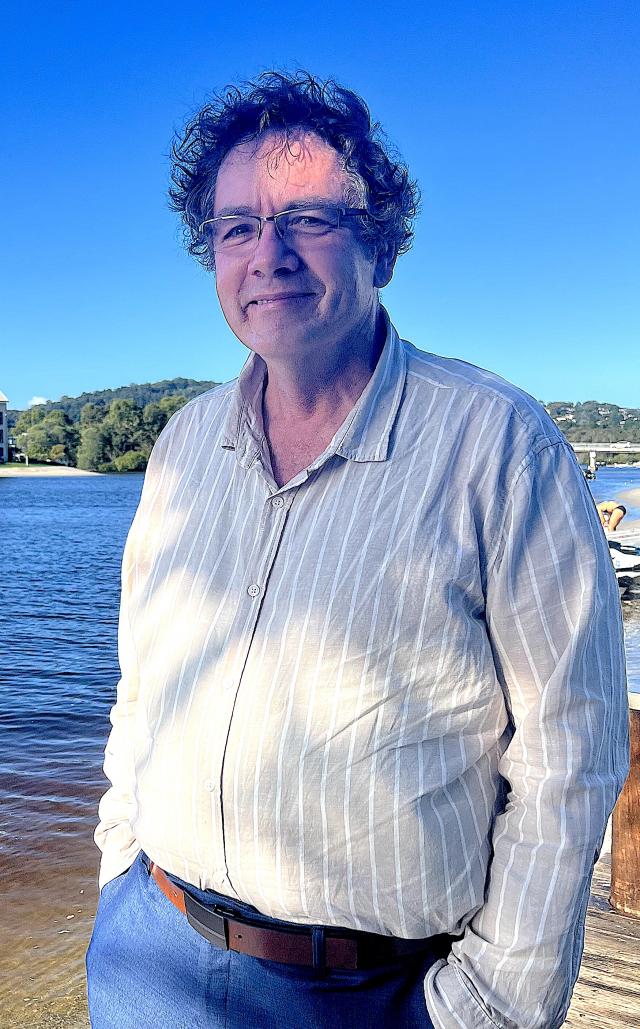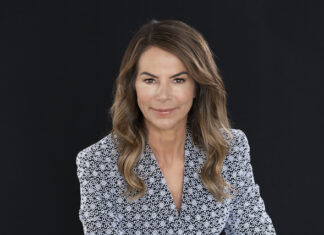In the slide show you’ve put together about this proposed reset, you talk about megatrends. I have a vague idea how that works but can you explain?
In past decades thinking about Noosa’s future was fairly straightforward – we didn’t want to become the Gold Coast and we wanted to protect nature. In the current context, considering megatrends, that type of thinking is somewhat meaningless.
To start a scenario for a planning process, the first thing you look at is what are the megatrends, how they play out locally. I would then ask what are two critical axes of uncertainty. Those factors that the community believe are likely to be the key influences on the types of future we create. The role of technology is going to be very important in this. If you look at what Sydney has mapped in its transport scenarios, the high technology adoption option reduces emissions by 90 per cent, whereas the ‘sustainability slowtech scenario’ model reduces it by 50 per cent. That’s probably the scenario that we are heading towards in Noosa, because there’s still some disagreement in the community, for example using vehicle recognition to introduce congestion charges in key areas. Another big trend that’s increased in the last few years is global instability, which leads into the need for greater focus on self-sufficiency.
Am I hearing you correctly that you’re saying we have to slow the processes down in order to get outcomes? If so where does that leave ZEN 2026?
I’m not saying we’re slowing down. I’m saying if we look at zero targets for the council, that’s doable. For the community it’s probably doable for electricity but we’re nowhere near it in transport or waste. I think that’s why we need to do what I’m proposing, so that we can get to a shared view about where Noosa is going. We have baby boomers who are at that stage of life where they think about themselves too much, and we’ve got a whole lot of new arrivals who like the place but they don’t have an understanding of why Noosa is different and what we have to do to keep it that way. Then there are the Gen Xers coming into town with money and they don’t realise that too much reliance on traditional economic growth will lead us where everywhere else has gone. They have to be involved in the conversation too.
I suppose one way to think about all of this is to consider what your own opportunities were at 18-34 and work out how to offer those same opportunities to that age bracket now. That’s a conversation that’s not happening yet because some people are in denial that there is a housing crisis. But kids today are thinking not only are they never going to be able to buy a house but they also have climate anxiety.
How important is waste?
From the council perspective, the green waste going into the tip is responsible for 63 per cent of our carbon emissions. So, in terms of greenhouse gas, that’s one thing. In terms of landfill, there’s very little space left. While we’re good at recycling and we recycle more and more, we’re still creating more waste. Things like Plastic Free Noosa are working, but they’re still on the margins of the transformative change that needs to happen. And we still have a lot of people putting garden waste into the red bin, and so on. So, we create a lot of waste and it’s going up. We also use more water than all other communities in SEQ. That’s not a factor of tourism, it’s the resident population taking long showers, watering their gardens and filling up their pools.
This would be a good place to summarise the threats to our future in order of the need for immediate action.
The most immediate is housing, how we keep our workforce and our 18-34 year olds. The only way we can do that is with public intervention, public dollars. We’re working with state and federal authorities to achieve that. We’re also looking at incentives to secure private investment from developers, where they hand over part of their development to a not for profit housing organisation. It’s called Inclusionary Zoning.
We then have the Destination Management Plan which will require new levers to be pulled if we are to address all those issues that can‘t be controlled by a planning scheme. So the DMP should take in Transport Strategy, Cultural Plan, Environment Strategy and the Noosa Plan. On top of that we have to build our brand but focus on regenerative tourism, which means people who want to experience nature and culture. There will always be people who just want to go to the beach, but we have to focus on fewer people having a richer experience. To achieve that you need levers to control mass tourism.
We then have waste. Zero Waste, Zero Emissions, Smart Biospheres, getting people out of cars, these are all aspirations that require transformational change, rather than a gradual transition. In the old lingo we are trying to facilitate a paradigm change. In my opinion before the community can be committed to achieving them, they need to understand them.
I am now trying to stimulate thinking within council and the community that to facilitate transformational change we need to engage in a meaningful way to get the current community enthusiastic about a ‘future Noosa’ that respects the principles of the past in terms of environmental protection and growth management, but which doesn’t simply defend the status quo.
What’s the time frame?
It’s going to be done progressively, and if by budget review time enough people think it’s a good idea, we can get started.

